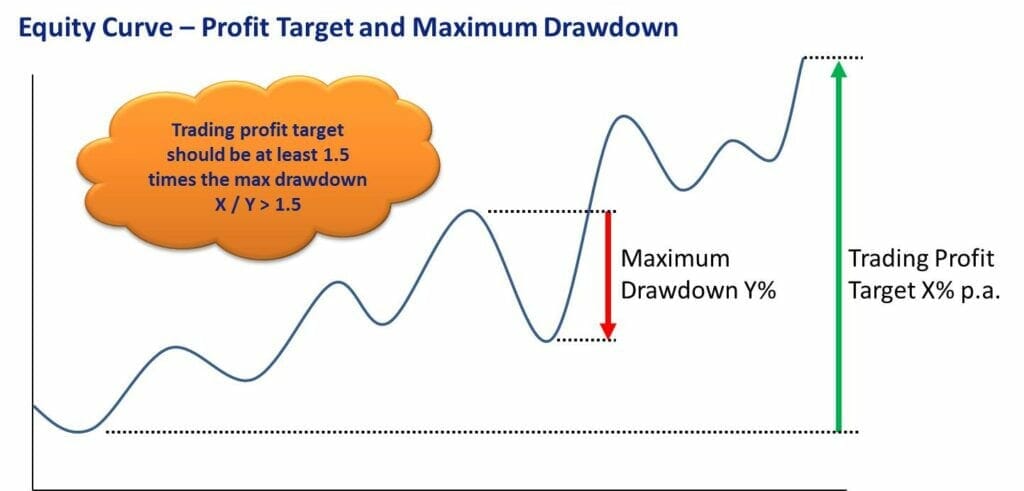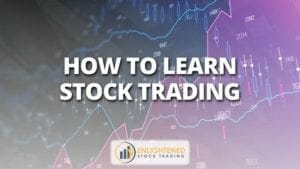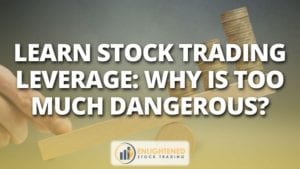When you learn how to trade in stocks, it is important so set realistic annual trading profit targets. A Trading Question I received from a coaching client on this topic was:
“What is a realistic profit target when developing my trading plan and setting my trading system objectives? Does this depend on what I am willing to risk?”
As you learn stock trading, the realistic trading profit target depends very much on:
- Your skills as a stock trader
- How good your stock trading system is,
- How much risk you take on
When I first started trading, my objective was to ensure that I didn’t lose all my money! Now my objective is significantly more optimistic than that.
It is difficult to say what is a realistic trading profit target for your individual purposes, but hoping to earn 50% per year consistently is probably unrealistic for a beginner (and most professionals in fact), and hoping to earn 5% per year consistently is not worth bothering with because you can get better risk adjusted returns elsewhere.
If you spend any time at all surfing the web looking at the sorts of returns being claimed, you will notice that many traders and educators will claim to be earning 5% to 10% a month (particularly leveraged Forex and Options traders) …But you really have to wonder what level of risk they are taking on and what will happen to their account when a bad trade inevitably comes along.
It is not always true that you need to take on higher risk to get higher rewards. For example, you may design a better trading system than you had previously and get better returns for less risk. However, I believe two general principles apply:
- There is always risk – but it may not always be obvious or visible
(e.g. Long Term Capital Management) - Higher returns generally mean higher levels of risk
(Refer principle 1 i.e. higher levels of risk may not always be visible)
So rather than starting with the return side of the equation, I suggest you think very carefully about your objectives for risk and capital preservation first. If you start with risk and then determine how much return you can get for the level of risk you deem acceptable then you are less likely to get yourself into trouble. But if you start with returns, you are likely to get seduced by the dark side (yes that is an intentional Star Wars reference) and end up taking on more risk than you really should.
Defining Your Level Of Risk:
If you do not want to risk losing more than 5% of your account then this will tell you that you need to be very conservative and your returns will also be conservative. Alternatively, if you are comfortable risking a 50% loss of your trading capital then you could aim for much higher returns.
It is worth considering this at different levels:
- If you started trading with $10,000, how much of this would you be comfortable losing before you gave up on trading?
- If you had some success and you built your account up to $50,000, how much of this would you be comfortable losing?
- If you had even more success and your account was up to $100,000… or $250,000… or $1,000,000…
The risk side of your objectives is much more informative than the return side generally.
Other risk type questions to ask might include:
- How much am I comfortable losing if the market crashes by 25% tomorrow?
- What is the most money I can lose without it emotionally compromising my trading?
- How much money am I willing to put into a single stock given the risk of a stock specific event causing a big drop in the stock price? …etc…
Conclusion On Trading Profit:
Once you have thought about your level of acceptable risk, you can start to determine what makes sense for your profit target as you learn how to trade in stocks.
As a starting point I would say that your target should be at least 1.5 times your maximum drawdown tolerance. For example, if your maximum acceptable historical drawdown is 15%, then you should be aiming for at least 22.5% per annum compounded return.

This approach will stop you from getting excited by the idea of making 100% per year if the expected drawdown from this is 80%…especially if you already decided that you are only comfortable with a 10% drawdown.
The better you get at designing stock trading systems, and the more diversified trading systems you have, the higher the ratio of annual return to maximum drawdown will be.









Share This
Share this post with your friends!